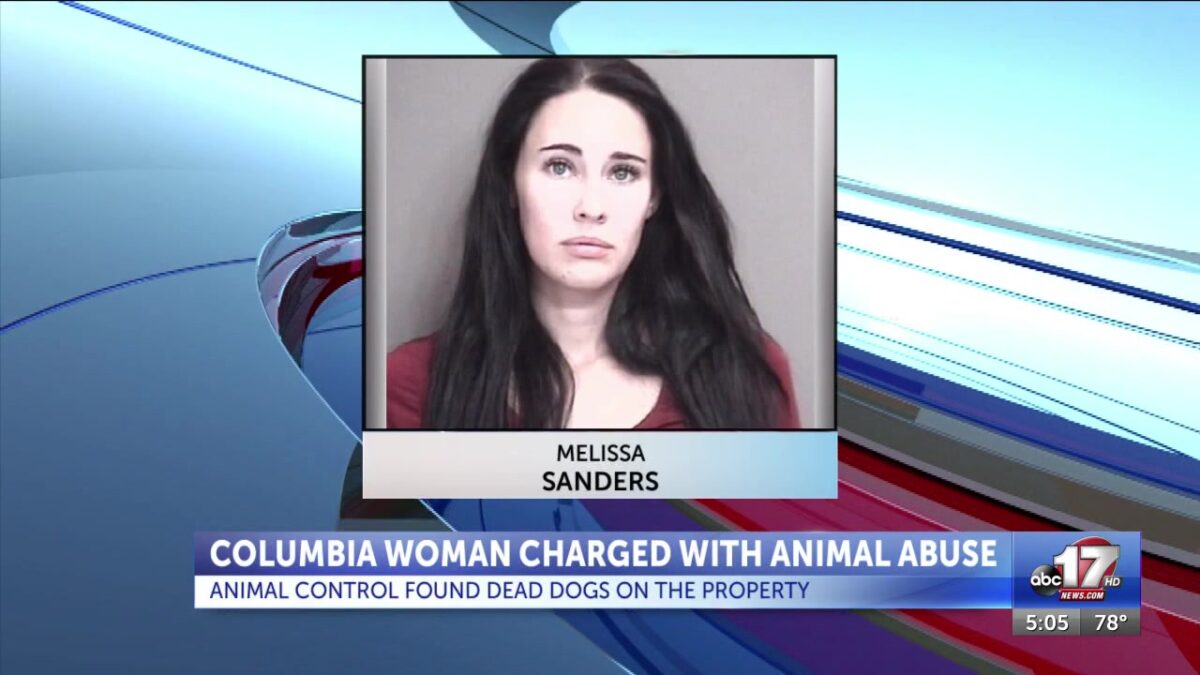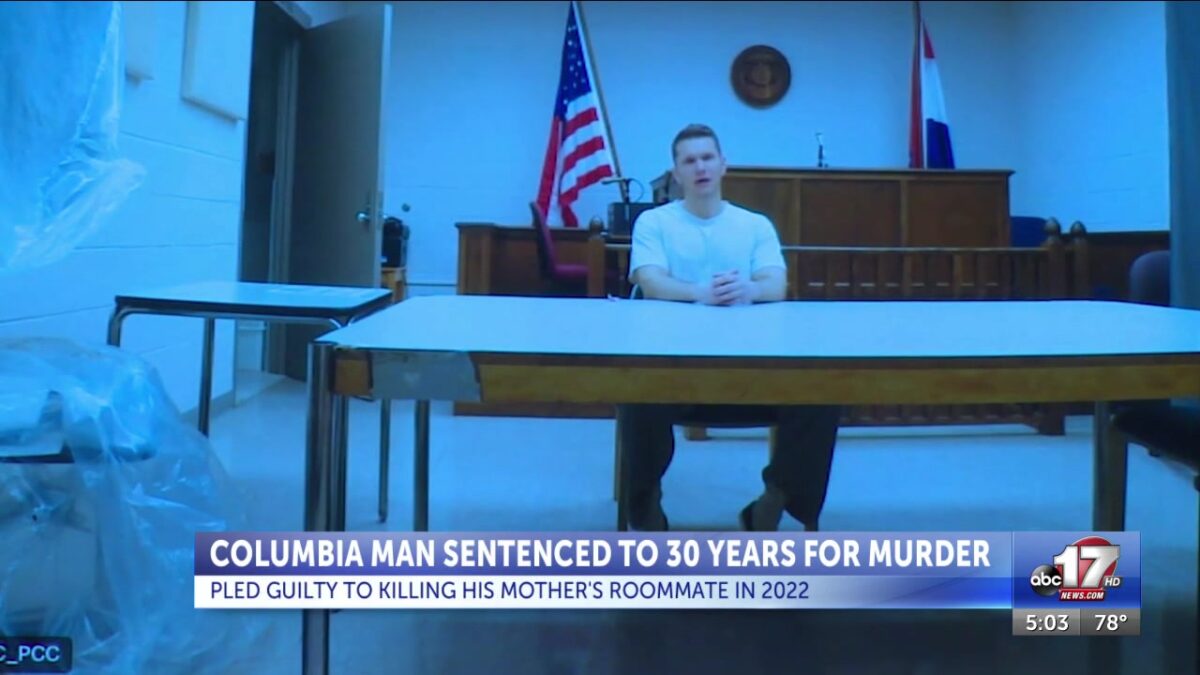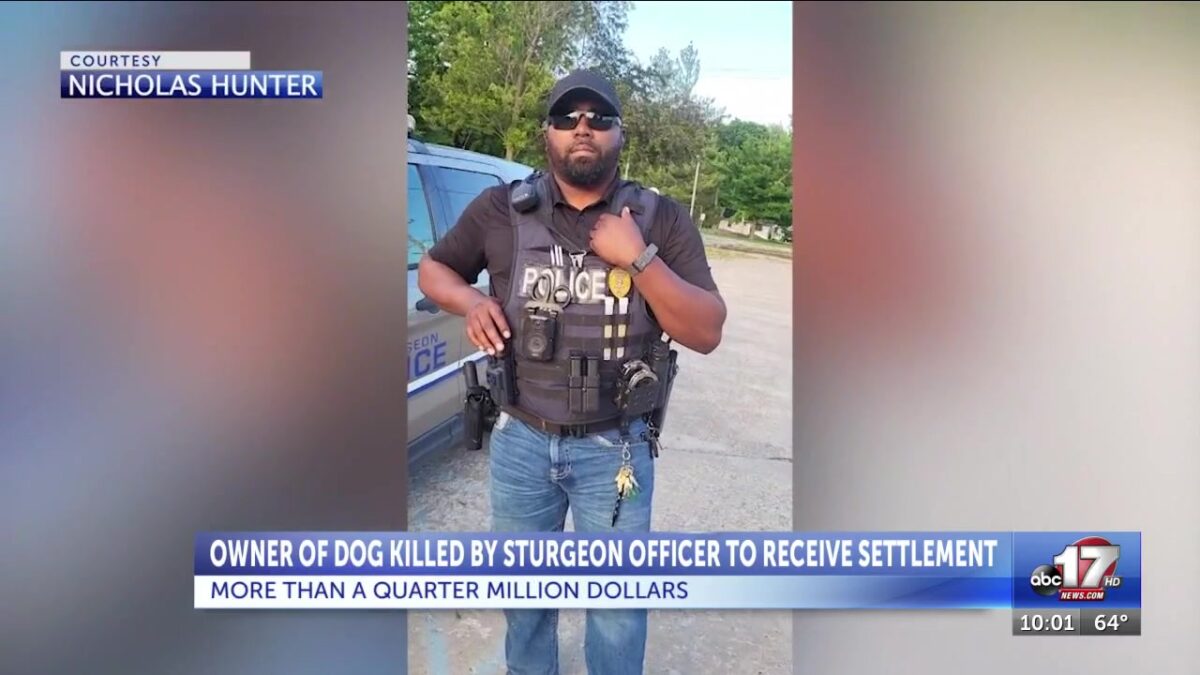Mitchell Kaminski
STURGEON, Mo. (KMIZ)
The City of Sturgeon and a former police officer will pay a combined $500,000 to settle a lawsuit over the 2024 shooting of a blind and deaf 13-pound dog named Teddy — an incident that led to national outrage, staff resignations and ultimately the shutdown of the city’s police department.
Under the agreement, Nicholas Hunter, Teddy’s owner, will receive $282,500 through the Missouri Public Entity Risk Management Fund. The remaining $217,500 will go to the Crinnian Law Firm, which represented him. Sturgeon’s financial responsibility was limited to a $1,000 insurance deductible.
Hunter filed the federal lawsuit in May 2024 after Officer Myron Woodson shot Teddy while responding to a “dog at large” call. Body-camera footage showed Woodson attempting to use a catch pole for several minutes before shooting the dog at close range. The city initially claimed the officer thought the dog was “behaving strangely and displaying signs of possible injuries,” behavior the city described as “perceived to be rabid.”
As part of the settlement, Hunter agreed not to pursue further legal action.
Hunter v Woodson settlementDownload
Fallout inside Sturgeon
The shooting sparked international attention and an intense public backlash that overwhelmed city operations.
On May 20, the city claimed in a social media post that the officer saw the dog “behaving strangely and displaying signs of possible injuries” that was “perceived to be rabid behavior.”
Then-mayor Kevin Abrahamson resigned shortly after and was replaced by Seth Truesdell.
“Since the incident happened, we had to follow certain procedures for discipline and promotion, demotion, all that stuff for a police officer, and that it follows under a state statute,” Truesdell said. “One of those things was that he (Woodson) had to be placed on administrative leave with pay. And I know there are a lot of people that are upset about that and they want to armchair quarterback that, you know, ‘The city should have fired him’ and all these other things. But there was there’s a certain process you just have to follow.”
Truesdell said after the shooting, the city was inundated with hundreds of calls a day.
“We were getting death threats, bomb threats, city officials doxed to their home address, their kids’ pictures blasted all over Facebook,” Truesdell said. “I lost my entire city staff. So I had to replace everybody that was working for the city twice.”
Two newly hired office workers resigned within weeks, telling the mayor they no longer felt safe.
“Their first month or two working, there was nothing but death threats and phone calls. You couldn’t get any business work done because the phone was ringing off the hook constantly,” Truesdell said. “ They just decided that, and I think some of it was their spouses decided that they didn’t feel comfortable with them working there, especially with not really having a police department.”
The turmoil contributed to Sturgeon’s decision to “mothball” its police department. The city now contracts with the Boone County Sheriff’s Office for law enforcement and with Boone County Animal Control for animal services.
“The city didn’t handle it well,” Truesdell said. “I want to be right on the record saying that the city did not handle it well. Once I took over, we decided that as a collective that we were going to go down a different route and before we could get a lot of that stuff rectified, we were getting inundated with over 700 calls a day from all over the world.”
Following the overwhelming backlash, Truesdell said the city has since stabilized and moved forward.
“I didn’t think it was going to be settled this quick, so I’m happy that it’s settled regardless of my personal opinion on the amount,” Truesdell said. “I’m happy for Hunter. I’m happy for everybody that’s involved that it’s finally kind of moved on.”
According to the mayor, Woodson was hired after the city had taken the word of a sergeant who was working with him full-time with the Hallsville Police Department. Truesdell admitted the city did not do its due diligence.
“We just, I think, assumed that, ‘This guy’s working at Hallsville. This guy has been a police officer for a while. Let’s just go ahead and move on.’ And we figured that there’s due diligence had been done by others,” Truesdell said. “I think the city, from here forward, you really got to do your due diligence when you hire somebody and make sure there aren’t any skeletons in the closet that you’re not going to know about.”
Expert: Dog shootings by police ‘way more common than people think’
James Crosby — a retired police lieutenant who wrote the National Sheriffs’ Association’s Law Enforcement Dog Encounter Training course — said Teddy’s death reflects a national problem, one that the public rarely sees because departments are not required to disclose it.
“It is way more common than people think,” Crosby, who has testified on more than 15 dog-related shooting cases, said. “One of the reasons is that police departments, sadly, are not required to report to any central government entity or anybody when they use deadly force against an animal. Most jurisdictions consider it to be no different than if they shot a suitcase.”
Despite the availability of federally approved training, Crosby said most departments wait until it’s too late.
“The training across the country is limited, but it’s available,” he said. “But departments are not taking advantage of that usually until after they get sued.”
According to Crosby, the risk police face from dogs is minimal — especially compared to the risk of firing a weapon, adding that dog-related shootings almost never present the danger officers claim.
“It’s very rare for a healthy adult to be killed or even seriously attacked by a dog. So when assessing risks, the human is way more dangerous to the police officer than a dog. In fact, more police officers are killed by horses and cows than have ever been killed by dogs,” Crosby said. “Whenever you pull the trigger and there’s lead going downstream, something’s got to happen to it and the on on the risk, on the other hand, is minimal. No police officer has died kind of related to a dog attack since 1932. And that officer was allergic to the rabies vaccine.”
He said understanding dog behavior requires little specialized knowledge and that simple tactics prevent harm.
“It doesn’t take a lot of training or high-level experience with dogs to learn the basics of understanding what a dog’s likely to do, to understand its body language and therefore be able to predict its behavior,” Crosby said. “It’s even easier to learn basic strategies to keep the dog away from you.”
After reviewing the bodycam footage, Crosby criticized Woodson’s use of force.
“My first reaction was kind of sit here and bang my head on the desk, going, ‘How in the world could a normal-sized trained police officer think that 13 pounds of Shih Tzu was somehow a threat, for crying out loud?’” he said.
Crosby added that even Woodson appeared to know there were other options.
“If you listen to the video, he stops and talks to himself and goes, ‘Maybe I should just throw a towel over the dog,’ and then for some reason decides not to and just shoots it twice,” Crosby said. “I think for as egregious as this was and recognizing the value of pet dogs as parts of our family, I think the half million dollars was a very fair settlement.”
Woodson was charged this week in an unrelated Boone County case with misdemeanor trespassing. A court appearance is scheduled for 1:30 p.m. Monday at the Boone County Courthouse.
Click here to follow the original article.









